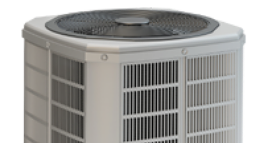Drones are useful tools that can help agents make their listings stand out from the crowd. Here’s how you can differentiate your listings through the use of high-quality drone real estate video and aerial photos.
Big Benefits
By providing a unique perspective of properties, drones are able to capture images not often seen in many local markets. This allows agents to differentiate their listings from the competition. It’s also a good way to set homes apart in competitive markets with a lot of similar inventory.
Drones can also show prospective buyers a variety of key details, including:
- Provide insight into the neighborhood and surrounding area.
- Confirm that the roof is in good condition.
- Show a home’s proximity to stores, parks and amenities.
- Show parents what a child’s walk to school might look like.
- Provide visual data for property maps and surveys.
Versatile and Affordable
While they may still seem like a newer technology, drones have already become much more affordable. A viable model starts at just a few hundred dollars. Depending on their capabilities, drone camera attachments are also moderately priced.
For many real estate professionals, drones can significantly reduce the cost of shooting elevated imagery. They also offer impressive versatility that enables agents to include footage on more listings, no matter the price range. Depending on the model and its attachments, a drone can shoot video, stills or both. Agents can then edit and share the footage using a variety of tools or apps without needing much experience or expertise. There’s no need to hire a pilot or a production professional; agents can do everything on their own.
Understanding the Laws
In the summer of 2016, the FAA released its official rules for amateur drone operation. These included some roadblocks – such as waivers – that allowed real estate professionals to start leveraging these handy aerial tools. That said, agents need to be aware of some key restrictions that could bring substantial fines. These include:
- Drones must weigh less than 55 pounds and be registered with the FAA (this costs $5).
- Drones can only be used during the day and must not fly above 400 feet or faster than 100 mph.
- Your drone must always be within your visual field.
- You cannot operate a drone from a moving vehicle.
- Drones are not allowed in specific places, including the District of Columbia and stadiums.
In addition to these clear rules, there are also some etiquette issues that may or may not result in fines. You can avoid any potential complaints by following these common-sense guidelines:
- Get a homeowner’s permission before conducting a fly over.
- Never fly over private property without permission.
- Stay clear of windows and don’t hover over people or crowds.
- Don’t use the drone if the noise might disturb residents.
- Respect people’s privacy at all times.
You should carefully read your manual to ensure that you can operate the drone. You should also log several practice hours in a safe, open area, so you will be less likely to cause injury or damage to property. Most people are able to master the controls without much trouble; however, a little practice can help you avoid unexpected mishaps.
By providing more visual information at a reasonable cost, drones are helping to streamline the buying and selling process. Now that state, federal and industrial organizations have agreed on some key points, drone adoption will quickly escalate in the real estate sector. By being one of the first in your area, you can gain a competitive advantage that can make your listings leap off the page.
2-10 HBW offers comprehensive warranty coverage to protect your clients’ biggest investments. Contact us today.








